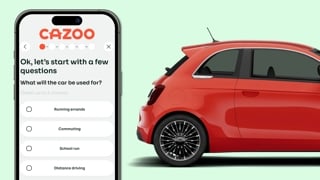Amadeus Tunis, associate managing director, strategy, transportation and mobility, Publicis Sapient, shares his thoughts on where AI can help shape the automotive industry experience for the better.
The automotive industry is in the driving seat of the Artificial Intelligence (AI) revolution. But though driverless cars and robot-taxi services attract headlines and provoke debate - to see the real engines of change, you need to look under the bonnet.
Businesses of all shapes and sizes are experimenting with AI. What was once the domain of data scientists and specialised tech companies, has now become accessible to all, thanks to open-source applications that make the technology consumable and actionable at any level.
When strategically implemented, AI can enable automotive companies to develop a unique competitive advantage, serving as an accelerator for growth and profitability.
Brands and business leaders know that the time for experimentation is now - even if there isn’t a clear goal or perfect product fit. Those who wait are already too late.
AI technology is reshaping every part of the automotive experience, so we will highlight three key categories.
Elevating Experiences
Brands and automakers can never lose sight of the end user: the driver.
As the in-car experience becomes more digital, brands have the opportunity to elevate that engagement for drivers. This can mean seamlessly connecting with a user’s devices and personalising the in-car experience in line with their preferences. It could mean optimising the performance of the car based on the user’s style to increase efficiency. Or it could improve the safety of a vehicle, using real-time data to monitor performance and help manufacturers proactively solve problems before they arise - or even fix issues as they happen in real time.
This is powerful. Addressing maintenance or repair issues before a service event happens eliminates downtime for vehicles, reduces maintenance costs and keeps vehicles on the road. These processes are the cornerstones of long-term strategies that make meaningful differences to people, surging brand loyalty and boosting Customer Lifetime Value (CLV).
Revving up Retail
Breakdowns do not just happen on the road. They can happen at multiple points in the customer journey - and sometimes long before a customer ever starts up a vehicle.
Just as it can improve the in-car experience, AI can help identify and eliminate friction points or improve potential breakdowns in the retail process and navigate users to a personalised, positive outcome. AI powered analysis gives auto brands a holistic view of individual customer behaviour, deciphering signals and patterns across channels and touchpoints and empowering auto-brands to create seamless experiences.
For example, rather than a customer contacting a dealership when their lease is about to expire, AI will predict the best course of action for the customer and give the dealer multiple opportunities to engage the customer beforehand.
Similarly, AI data can be used to improve after-sales. In the future, AI can arm junior technicians to ask questions, troubleshoot, identify problems and make repairs they otherwise may not have the expertise to do.
Organisational acceleration
Knowledge is power. Especially when it comes to AI.
AI offers a tremendous opportunity to better model and predict future demand and availability of fitting or next best vehicles. Predicting what inventory is available and what would be the best fit for each customer can improve marketing efforts, hyper-personalization and the overall buying experience. More detailed predictions and recommendation capabilities will inform the timing of offers, and increase accuracy when selecting the right message and offer to resonate most with a customer.
With the help of AI, digital twin technology can create a virtual replica of an entire vehicle (including its software, warranty data, service history and performance), a factory or warehouse supply — even an entire organisational structure. This gives brands, suppliers and OEMs the ability to simulate real-time supply and demand of vehicles, parts and services, digital products and more, while allowing scenario building and respective mitigation planning.
In reality, the last thing that AI will replace is the human driver. The AI revolution is enhancing the human experience, not replacing it. Every facet of the industry is evolving. Intelligent use of data is improving experiences for customers (both in vehicle and in communications) - and increasing efficiency for brands (in terms of marketing, manufacturing and maintenance).
The scale of the AI opportunity is vast and leaders need to experiment in order to capture it. The only wrong move is inaction.
Author: Amadeus Tunis, associate managing director, strategy, transportation and mobility, Publicis Sapient



















Login to comment
Comments
No comments have been made yet.